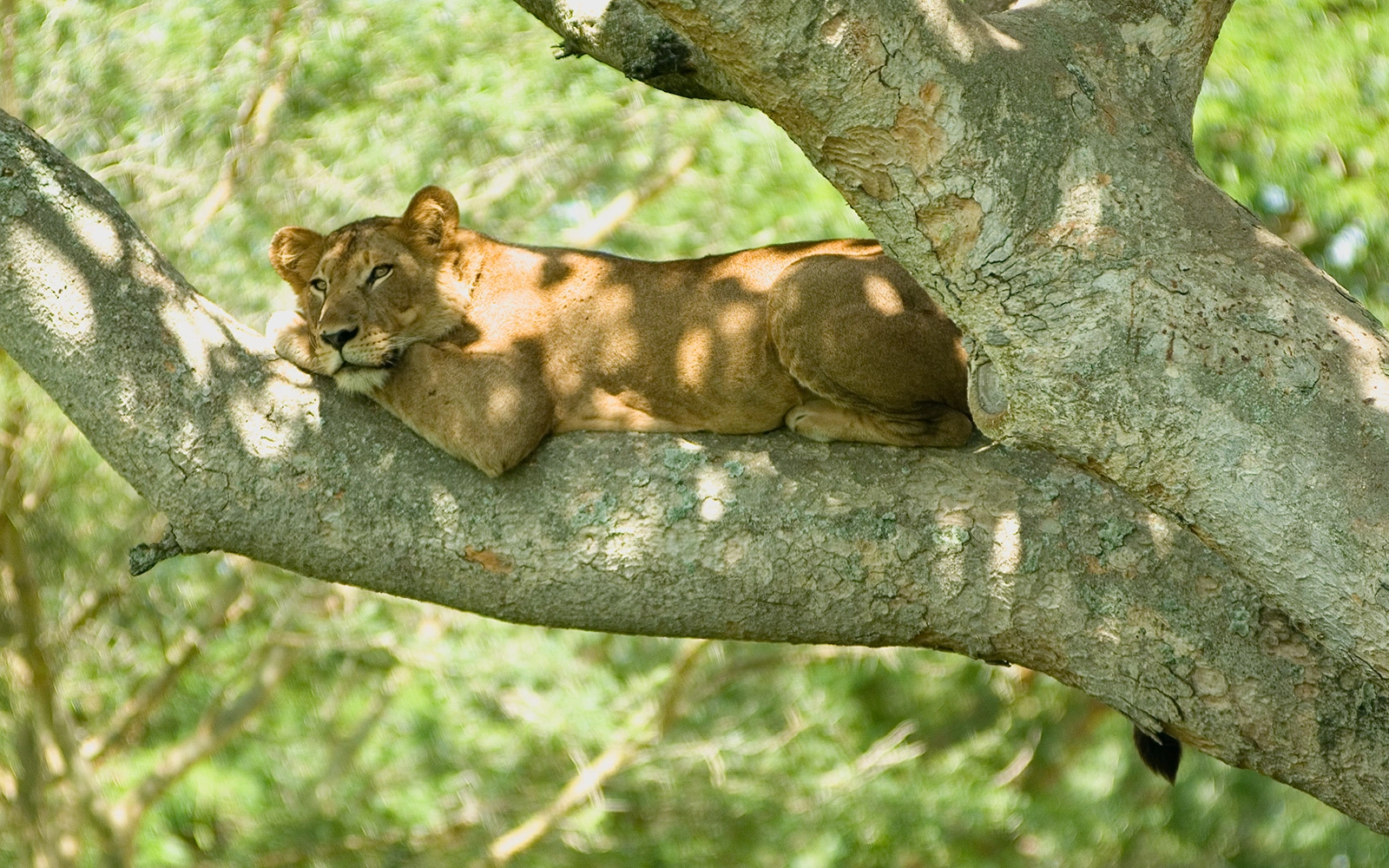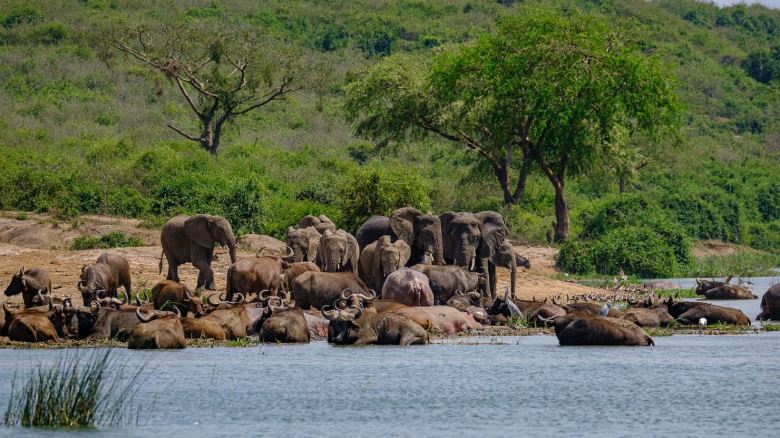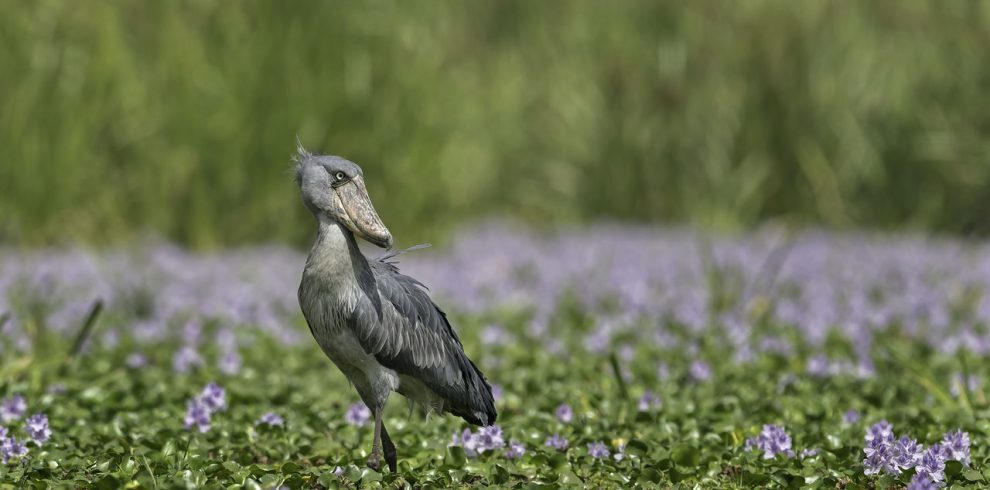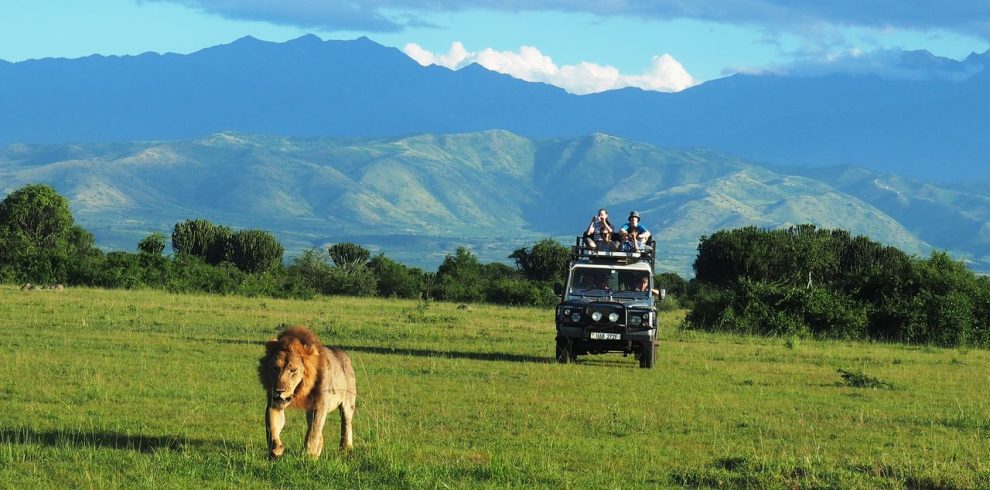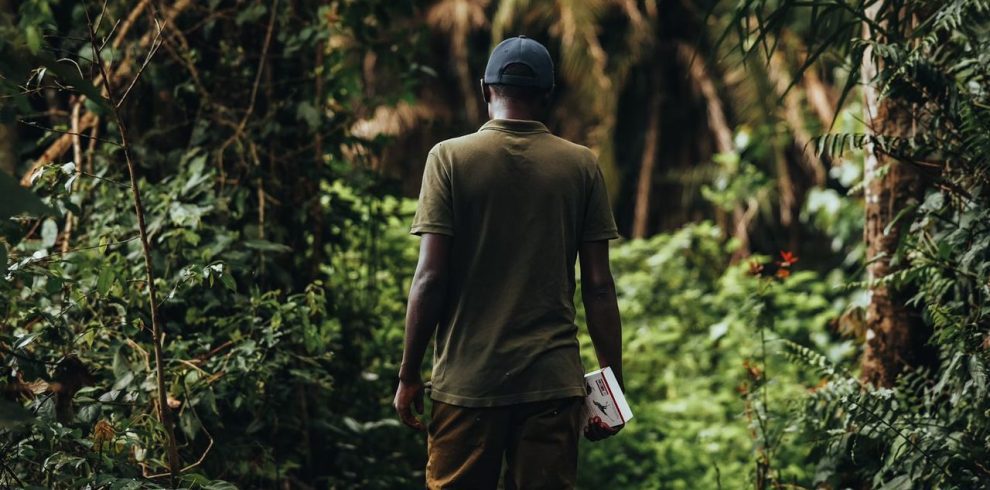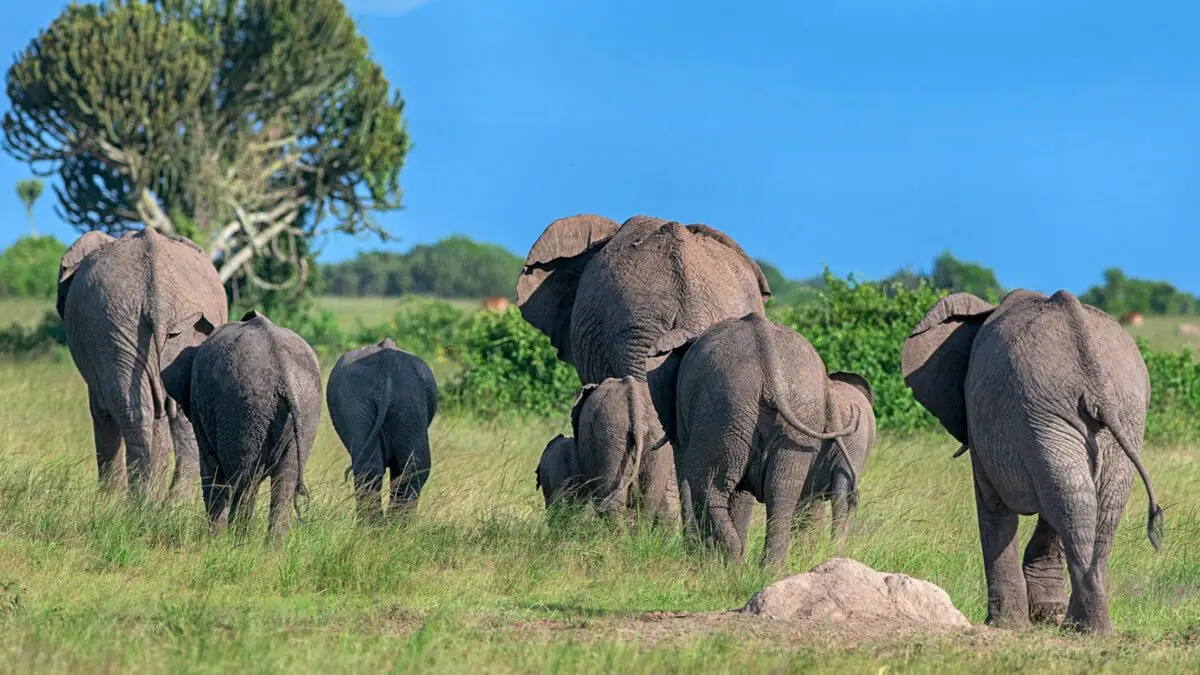Table of Contents
ToggleUganda is a true year-round Africa safari destination, but the best time to visit Uganda for optimal wildlife viewing conditions is between its 2 dry seasons of December to February and June to September. Situated on the equator, Uganda has little year-round temperature fluctuation. The average monthly temperature typically sits between 24 and 30 degrees Celsius, however during the rainy season, strong rainfall may impact some trails and roads.
Which month is best for gorilla trekking in Uganda?
The best time to visit Uganda for a face-to-face encounter with rare mountain gorillas is between December and February or June and August.
During these dry periods, the days are clear, skies are blue and hiking trails are relatively mud-free. While these incredible apes can be encountered year-round, conquering the Bwindi Impenetrable Forest in the wet months can be slightly more challenging.
Trekking gorillas in Uganda can entails several hours of hiking up and down hills, and during the rainy season, trails will be slippery and muddy and thick tropical vegetation can present some roadblocks. The off-season does have its benefits, however, and with fewer tourist crowds, you may find yourself meeting gorilla families with only a handful of other trekkers.
Month by Month Guide for Travelling to Uganda
January
Best For: Cooling Off In The Tropical Forests
January is one of the hottest months of the year in Uganda. During this time, the days are sunny and temperatures usually range from 24 to 32ºC.
This makes January a perfect time to escape the heat and travel to the high altitudes of Bwindi Impenetrable National Park to trek with gorillas in cooler conditions. You can as well track chimpanzees on foot through the verdant tropical rainforest of Kibale National Park.
January fall in the middle of the shorter dry season in Uganda, and while rain is still possible in the rainforests, you’re unlikely to experience regular downpours.
February
Best For: The Driest Trekking Conditions And Spotting Wildlife
February is one of the top months to go on a safari in Uganda because it a great time for mountain gorilla trekking and one of the driest months of the year.
Ordinarily, hiking in the dense forest jungles can be wet, muddy, humid and sometimes uncomfortable, but February’s dry days make for ideal trekking conditions. Plus, with decreased rainfall and reduced vegetation, spotting game in Uganda’s savannah park is easier than ever.
Boat safaris on the Nile River in Murchison Falls National Park and Kazinga Channel boat cruise in Queen Elizabeth National Park are brilliant during this month.
Wildlife tends to gather at the water sources. Expect clear skies, sunshine and average temperatures of around 29ºC in Kampala and 25ºC in Bwindi Impenetrable Forest.
You may also like; best time to visit Kenya
March
Best for: green lush landscapes and birdwatching
The month of March marks the start of the “long” rainy season in Uganda, which lasts from March to May. During this time, expect long, heavy showers every afternoon and evening, but as long as you have proper rain gear, a rainy season visit can be completely rewarding.
While heavy rains can impact the trails and roads, the vegetation will be green, and flowers will bloom across Uganda. This is also the perfect opportunity to spot the animals in the parks giving birth to their young. Bird watching enthusiasts will be mesmerized by an array of winged beauties as the heavier rains prompt avian migration.
Queen Elizabeth National Park is an excellent place to spot 611 of Uganda’s 1097 rare and colourful bird species, and the area will be quieter and crowd-free during the off-season.
Migratory birds leave Uganda in April and return by early to mid-November.
April
Best for: quieter parks and good deals on low-season accommodation rates
April is the wettest month of the year in Uganda, but savvy travellers will see it as a chance to capitalize on discounted rates for accommodation and crowd-free safari parks.
For those up for an adventure, the gorilla trekking permits for Bwindi and Mgahinga Gorilla National Parks will be easier to book this month with fewer other travellers to compete with.
While the trek will come with some weather-related challenges (proper rain gear is needed!), the rainy days usually have gorillas gathering in the warmth of the lower altitudes, so whilst the trails are bound to be muddy and slippery getting to the gorillas will take much less time.
May
Best for: fewer crowds and more intimate wildlife encounters
The month of May lies at the tail end of Uganda’s long rainy season. Thus, the days will be warm and wet, with rains tapering off toward the end of the month. The landscapes will be lush and verdant. The vegetation will create stunning backdrops for photography.
Heavy downpours will be received frequent in Bwindi Forest, but the mountain gorillas will still be visible at lower altitudes before they head back up into the cooler mountains in June.
Accommodation is readily available in May, and prices are usually lower than during peak season. Also, wildlife permits are easy to obtain this month as crowd sizes thin, so you could find yourself observing a family of gorillas with as few as 2-3 other trekkers.
June
Best for: peak season excitement
In June, the rainfall let up, leaving the landscape gorgeously green with blue skies and average warm temperatures of around 27ºC.
Toward the end of June, vegetation starts to retreat, increasing your chances of spotting African Big Five game animals throughout the country’s parks.
Because June is the first month of Uganda’s peak season, accommodation and safari activities will be open and the area will be buzzing with excitement.
You will want to book accommodation early in advance and secure your gorilla trekking permit as soon as you can, though, since they tend to sell out quickly.
July
Best for: ideal weather conditions for doing it all
July falls is Uganda’s peak season and with good reason: daytime temps sit at a pleasant 25ºC, sometime reducing to 13ºC in Bwindi Impenetrable Forest.
The dry climate and comfortable conditions open the door for a myriad of outdoor Uganda safari activities, from gorilla trekking, chimp tracking, game viewing to boat cruises on the Nile.
Game drives in the savannah parks will have top-notch sightings as wildlife congregate around water sources and are easy to spot.
By July, mountain gorillas have made the climb back up into the misty mountains, but the lack of rainfall makes the longer gorilla treks manageable.
August
Best for: leopard sightings and wildlife photography
August is the driest month of the year in Uganda and the country’s landscape will be sparse during this time of the year.
August is a prime month for game drives as vegetation will be at its lowest and you will enjoy a clear view of all the animals that may cross your path, from elephants and buffalos to lions and giraffes to zebras and antelopes — a photographer’s dream!
With open paths, you may even get the chance to spot one of the most hard-to-find members of the animal kingdom: the leopard.
Come with layers as nights can get chilly in August, with temps that can get down to 14ºC.
September
Best for: chimpanzee tracking in the forests
Although the end of September falls in the second rainy season of the year in Uganda, the first half still offers great game viewing conditions.
Usually, the rains won’t arrive in the highlands until later in the month, so early September is a perfect time for chimpanzee trekking in Kalinzu Forest.
The Kalinzu Forest Reserve is located near Queen Elizabeth National Park. The forest contains more than 300 chimpanzees, and a trek to see them in their natural habitat is a popular dry-season activity, as trails will be in the best condition.
October
Best for: last-minute travel deals
October is the start of the “short” rainy season in Uganda. While the rains are not as heavy as the “long” ones from March to May, they are more frequent, and you should expect occasional heavy shower throughout the day and muddy conditions.
Due to the unpredictability of the rains, October is not a very popular month to travel to Uganda, making it a great time to score a last-minute gorilla permit if you are an undecided traveler.
Accommodations often run special rates for October, and prices will be more reasonable. Don’t let the rains scare you off, though! It typically only rains for a few hours a day, and you will still have perfect pockets of sunshine and beautiful blue sky.
You may also like; best time to visit Rwanda to see gorillas.
November
Best for: shoulder season quietness
November is Uganda’s shoulder season and its good time to catch sight of the migratory birds returning. Photographers will be treated to dramatic landscapes and skies as late afternoon thunderstorms roll through the emerald-green countryside.
Temperatures vary, with some days reaching 28ºC and others dropping to 18ºC, though less than half of the days in November are rainy.
November is the last month to take advantage of off-season rates on accommodation and tour packages before the second peak season arrives.
December
Best for: adventure activities in Jinja and relaxing by the Nile
December comes with another dry season in Uganda, and weather becomes more predictable as rainfall reduces. This makes it an ideal month to soak up the sunny days in Jinja. Situated on the shores of Lake Victoria, the town of Jinja is home to the source of the Nile River.
Often called the “adventure capital of East Africa,” it has plenty of water sport activities, from white rafting and kayaking to tubing and sunset boat cruises. Lake Victoria is the largest tropical lake in the world and River Nile is the longest river on Earth.


